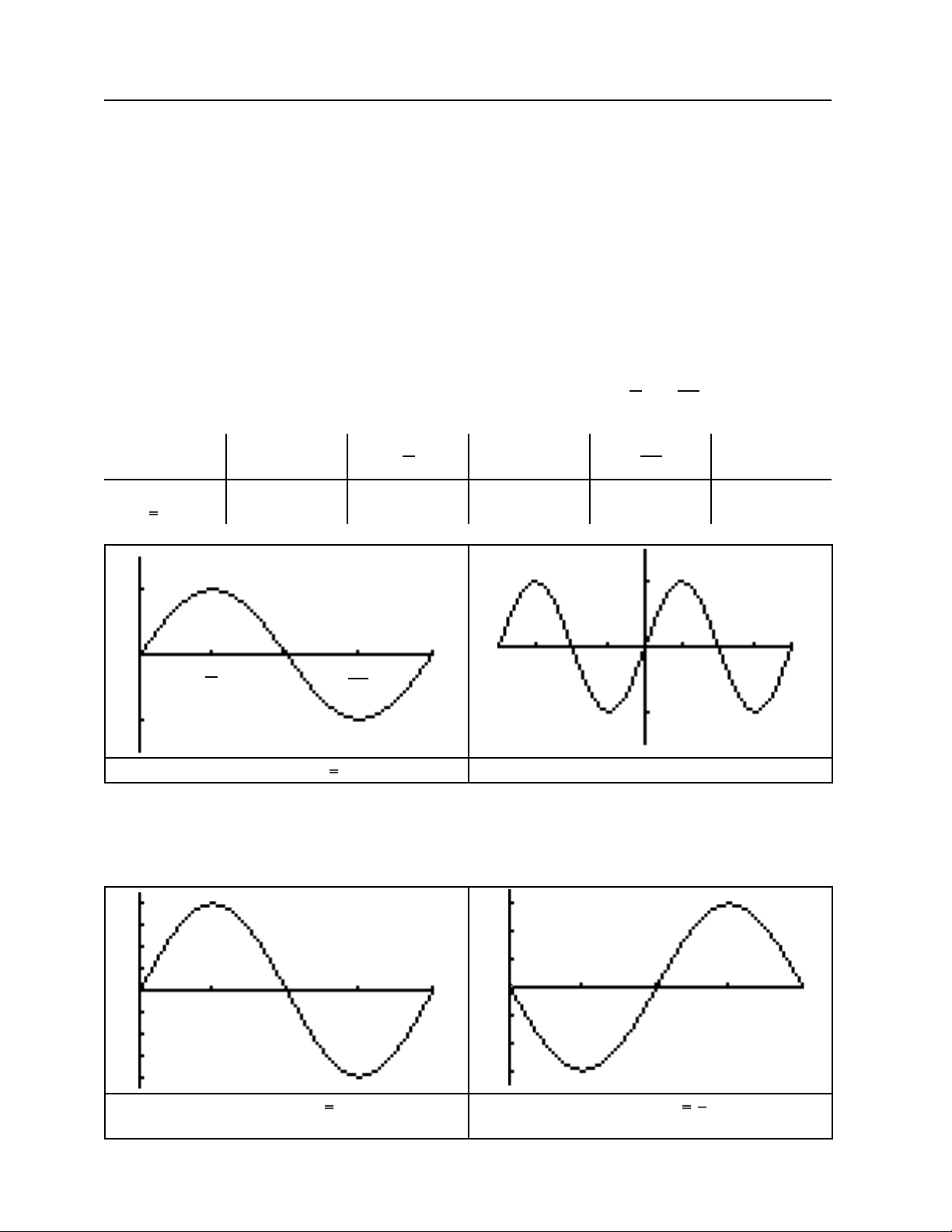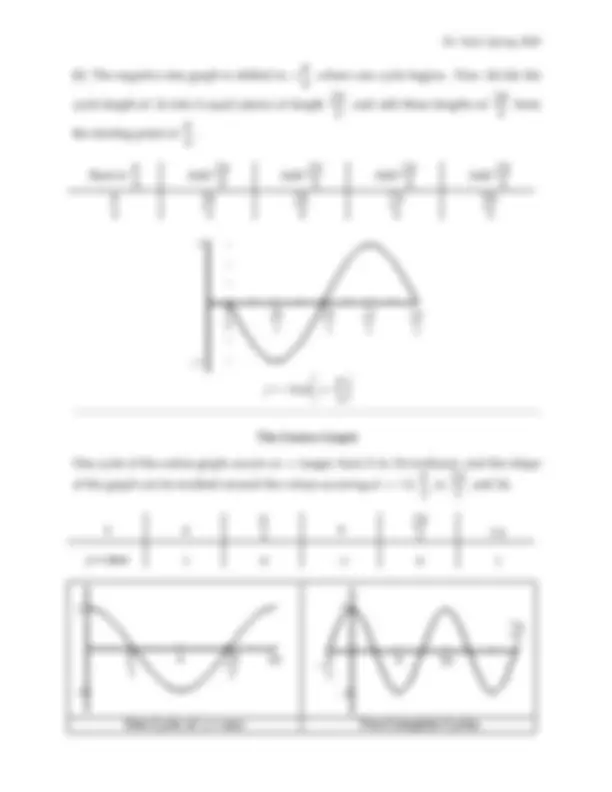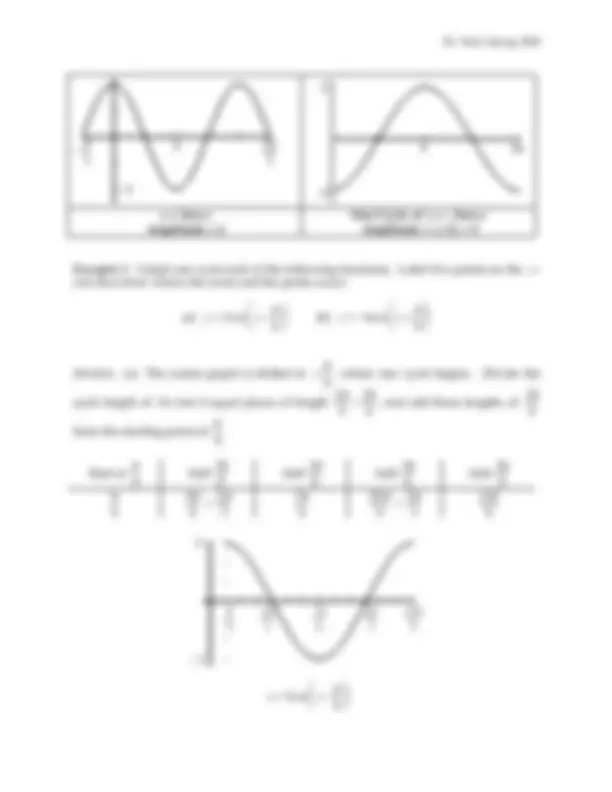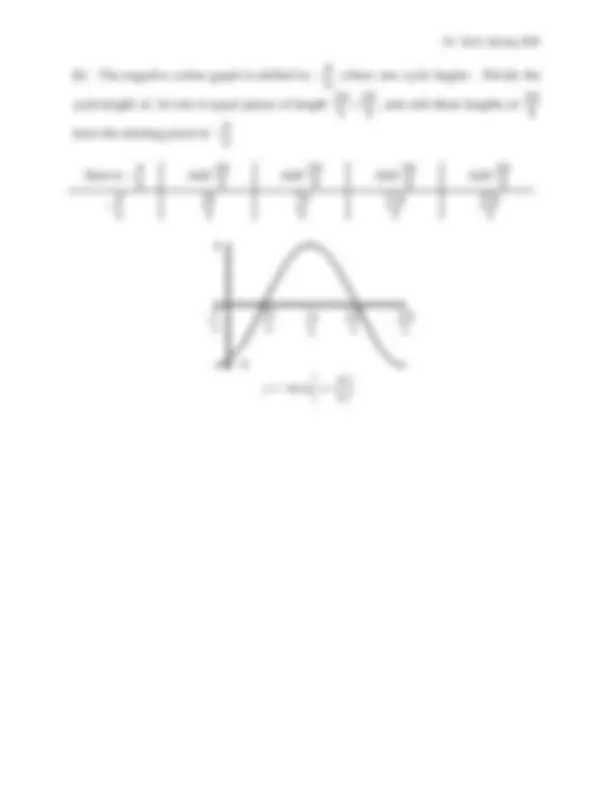





Study with the several resources on Docsity

Earn points by helping other students or get them with a premium plan


Prepare for your exams
Study with the several resources on Docsity

Earn points to download
Earn points by helping other students or get them with a premium plan
Community
Ask the community for help and clear up your study doubts
Discover the best universities in your country according to Docsity users
Free resources
Download our free guides on studying techniques, anxiety management strategies, and thesis advice from Docsity tutors
Material Type: Notes; Professor: Neal; Class: TRIGONOMETRY; Subject: Mathematics (Univ); University: Western Kentucky University; Term: Spring 2009;
Typology: Study notes
1 / 5

This page cannot be seen from the preview
Don't miss anything!




Each trigonometric function can be graphed as a function of x , where the variable x is always in radians. In particular, the functions y = sin x and y = cos x are defined for all x and are cyclic. That is, the shape of the graph repeats itself over the periods
.... − 4 π ≤ x ≤ − 2 π − 2 π ≤ x ≤ 0 0 ≤ x ≤ 2 π 2 π ≤ x ≤ 4 π 4 π ≤ x ≤ 6 π... etc.
which are simply wrap-arounds of the unit circle.
The Sine Graph
One cycle of the sine graph occurs as x ranges from 0 to 2π (radians), and the shape of
the graph can be molded around the values occuring at x = 0, π 2
, π, 3 π 2
, and 2π.
x (^) 0
π 2 π^
3 π 2 2 π
y sin x^0 1 0 –1^0
π 2 π 2
π 3 π 2
–2π 2 π
One Cycle of y sin x Two Cycles
Multiplying by a negative reflects the graph about the x -axis and multiplying by a constant “ a ” increases the range to – a ≤ y ≤ a rather than –1 ≤ y ≤ 1.
2 π
π
π/2^2 π
One Cycle of y 4sin x Amplitude = 4
One Cycle of y 3sin x Amplitude = |–3| = 3
Phase Shift
Given the graph of y = f ( x ) , we can shift the graph to the right by c units with the function y = f ( x − c ). We shift to the left c units with the function y = f ( x + c ).
(^3) – y = x^2 y = ( x − 3)^2 shifts x^2 to the right by 3
y = ( x + 2)^2 shifts x^2 to the left by 2
Similarly, we can shift the sine graph to the left or right by a certain angle with the function y = a sin( x ± c ). ––––––––––––––––––––––––––––––––––––––––––––––––––––––––––––––––––––––––––––––
Example 1. Graph one cycle each of the following functions. Label five points on the x - axis that show where the roots and the peaks occur.
(a) y = 2sin x + π 3
^ (b)^ y^ = −3sin^ x^ −
π 4
Solution. (a) The sine graph is shifted to − π 3
, where one cycle begins. One cycle ends
after length 2 π which is at − π 3
6 π 3
5 π 3
. So now divide the cycle length of
2 π into 4 equal pieces of length 2 π 4
π 2
. To do so, we must add lengths of π 2
from the
starting point of − π 3
. That is, start at − 2 π 6
and start adding 3 π 6
Start at − 2 π 6
Add 3 π 6
Add 3 π 6
Add 3 π 6
Add 3 π 6 − π 3
2 π 6
π 6
4 π 6
2 π 3
7 π 6
10 π 6
5 π 3 2
π 6
7 π 6
5 π 3
2 π 3
− π 3
y = 2sin x + π 3
π
π 2
5 π 2
2 π
π
y 2cos x Amplitude = 2
One Cycle of y 5cos x Amplitude = |–5| = 5
Example 2. Graph one cycle each of the following functions. Label five points on the x - axis that show where the roots and the peaks occur.
(a) y = 3cos x − π 6
^ (b)^ y^ = −4cos^ x^ +
π 8
Solution. (a) The cosine graph is shifted to + π 6
, where one cycle begins. Divide the
cycle length of 2 π into 4 equal pieces of length 2 π 4
3 π 6
, and add these lengths of 3 π 6
from the starting point of π 6
Start at π 6
Add 3 π 6
Add 3 π 6
Add 3 π 6
Add 3 π 6 π 6
4 π 6
2 π 3
7 π 6
10 π 6
5 π 3
13 π 6
π 6
2 π 3
7 π 6
13 π 6
5 π 3
y = 3cos x − π 6
(b) The negative cosine graph is shifted to − π 8
, where one cycle begins. Divide the
cycle length of 2 π into 4 equal pieces of length 2 π 4
4 π 8
, and add these lengths of 4 π 8
from the starting point of − π 8
Start at − π 8
Add 4 π 8
Add 4 π 8
Add 4 π 8
Add 4 π 8 − π 8
3 π 8
7 π 8
11 π 8
15 π 8
− π 8
3 π 8
7 π 8
11 π 8
15 π 8
y = −4cos x + π 8